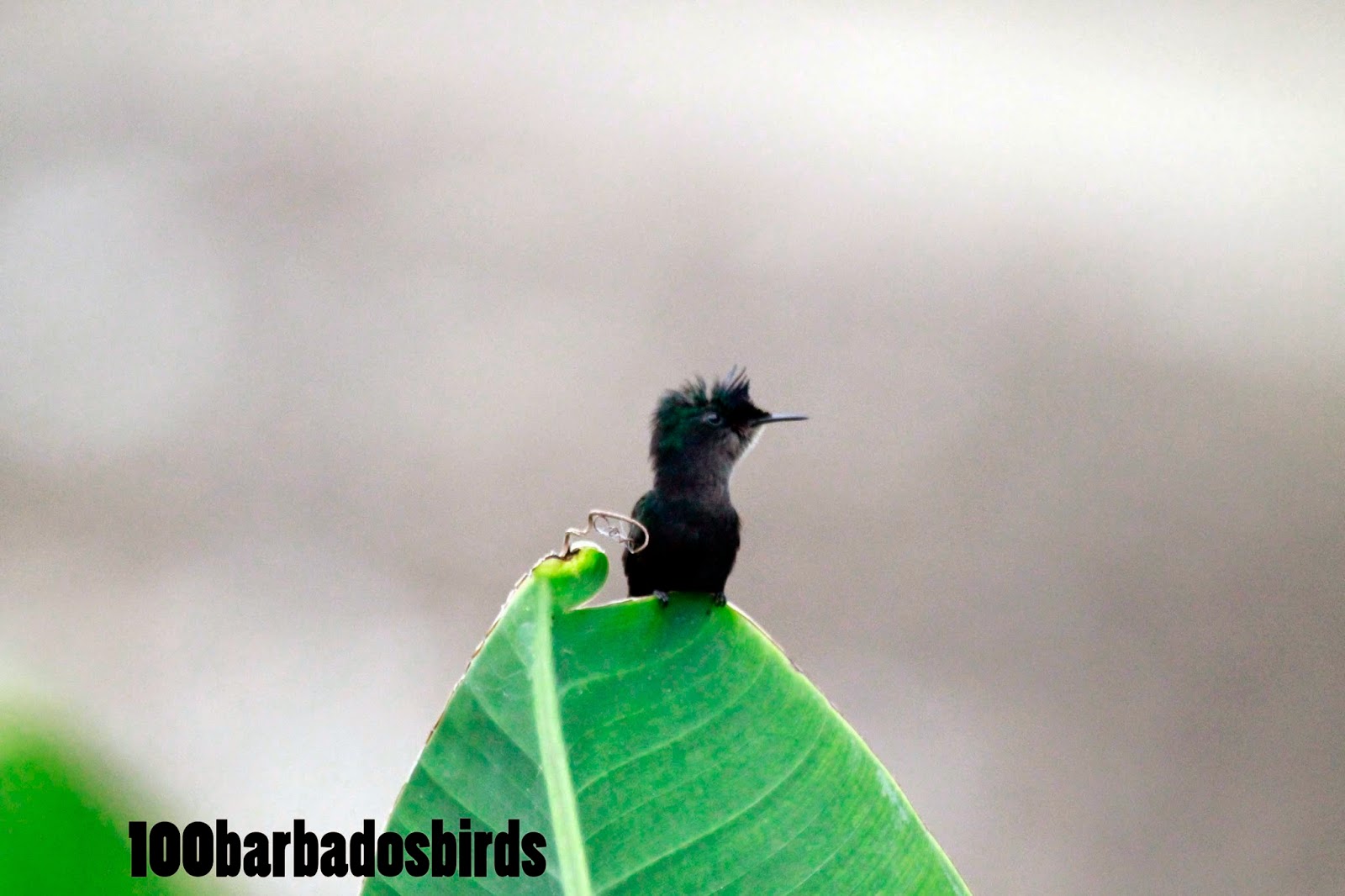Birds of Barbados is a social media initiative that aims to raise awareness and educate people about the beautiful birds of Barbados, both native and migratory, where and how to see them, the challenges they face, and the efforts to protect them.
Tuesday, 27 May 2014
Green Heron Feeding
 |
| Green Heron(Butorides virescens) |
Google Map link to Codrington Collage St. John
Click if unable to see Slides
Saturday, 24 May 2014
Friday, 23 May 2014
Second Week of May Birding
What a week of birding the second week of May turned out to be. In that week I recorded two lifers, one of which was a threatened West Indian endemic bird.
Sunday May 11,2014
I was invited by Dr. John
Webster to accompany him and Edward Massiah to the private residence of a man
who said he is having regular visits from a flock of Black-bellied Whistling
Ducks (Dendrocygna autumnalis) (BBWD)and
he also noted that among that flock is a West Indian Whistling Duck (Dendrocygna
arborea)(WIWD). The West Indian
Whistling Duck is a threatened West Indian endemic bird and a vagrant to
Barbados. We arrived at the location around
6:30am. It was an old sugar plantation with a lot of trees, some fruit bearing,
and others flowering plants. The owner
of the property met us in front of his home, one of the original plantation
buildings which he has restored. He also
boasted an impressive collection of local antiques which had us reminiscing on
days of old. He led us to a large veranda which looked to a pond and there it
was, the bird we came to see, the West
Indian Whistling Duck. It was not
difficult to pick the WIWD from among the BBWD. It was a taller bird and sported
distinctive black and white markings on its side. I recorded 16 bird species
which included over 80 BBWDs, Eared Doves and Antillean Crested Hummingbirds.
The
Antillean Crested Humming Birds were an unexpected treat. They were attracted
to the flowering Ornamental Banana Trees planted around the veranda, what a
treat for the eyes and the camera lens.
Tuesday May 13, 2014
I am always birding. While
walking, driving, eating or working, simply because birds are all around and
you can’t help but to see and admire them. Even though I am not an experienced
birder I know the common birds for this island well, and am very quick to
notice something unusual. This was the case on May 13 while visiting a client in
the small fishing town of Oistins on the south coast of the island. When I got
out of my car to go to the client I noticed this swallow type bird flying over
head. Quickly I realized that there was something different about this bird. It
wasn’t any of the two local common birds of that shape. Caribbean Martins were
much bigger and darker in color, while Barn Swallow Juveniles, which is about
the same size of this bird, does not have a white throat and chest band, plus I
have never seen a Barn Swallow in this location or in coastal areas in general.
As I walked to the client’s office I logged a description of the bird on the
local bird alert net. The closest experienced birder that could make it to see
the bird and ID it was on the West Coast, but he said that he would try to get
to the south coast. I was happy to see on leaving the
client’s office that the Bird was still there.
After work I made my way back to Oistins hoping to see the bird again. When I arrived Dr. John Webster was busy with his
camera in hand photographing the bird, which zoomed left and right just inches
from his face at incredible speeds. We were able to ID the bird as a Bank Swallow - Riparia riparia.
Even during migration and a drought they are
still exciting birds to be seen here in Barbados!
Monday, 19 May 2014
May 12 Birding (Photographs)
Location : St John, Barbados - Duration: 2 hours -16 Bird Species
 |
| West Indian Whistling duck (Dendrocygna arborea) |
 |
| West Indian whistling duck (Dendrocygna arborea) |
 | ||
| West Indian\Black bellied Whistling ducks |
 | |
| Black-bellied Whistling duck (Dendrocygna autumnalis) |
 |
| Antillean Crested Hummingbird (Orthorhyncus cristatus) |
 |
| Add caption |
 |
| Eared Dove (Zenaida auriculata) |
 |
 |
| Shiny Cowbird (Molothrus bonariensis) & Carib Grackle (Quiscalus lugubris) |
 |
| Shiny Cowbird (Molothrus bonariensis) |
Saturday, 17 May 2014
Bank Swallow
Common Name: Bank
Swallow, Sand Martin
Scientific Name: Riparia
riparia
Description: 4.75-5.5 inches; bills black; upperparts
brown; underparts white; brown breast brand; white throat; brown legs.
Habitat:
Open
coastal areas; social breeder- make its nest by burrowing into vertical cliffs or
banks around water sources.
Statue:
Passage
Migrant
References:
· Helm Field Guides-
Birds of the West Indies by H. Raffaele, J. Wiley, O. Garrido, A.Keith, J. Raffaele
Websites:
Wednesday, 14 May 2014
West Indian Whistling Duck (Dendrocygna arborea)
Length: 19-22" (48-56 cm); Habitat: Mangroves; ponds; fields; Statue: Very rare, Vagrant; Comments: West Indies Endemic; Listed on the International Union for Conservation of Nature (IUCN) red list as "Near Threatened and decreasing"
 |
| pale neck and light brown face, black bill, upperparts molting browns |
 |
| Black and white marking on the flanks |
 |
| Brown breast, long black legs, whitish underparts |
 |
| Separated from Black-bellied(back) by color of bill, flanks |
 |
| also no eye ring on West Indies (R) |
Subscribe to:
Comments (Atom)

















